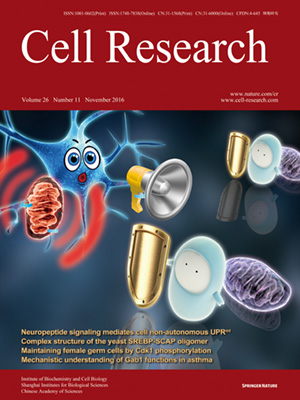
Volume 26, No 11, Nov 2016
ISSN: 1001-0602
EISSN: 1748-7838 2018
impact factor 17.848*
(Clarivate Analytics, 2019)
Volume 26 Issue 11, November 2016: 1242-1254
ORIGINAL ARTICLES
Turning rice meiosis into mitosis
Delphine Mieulet1, Sylvie Jolivet2, Maud Rivard2, Laurence Cromer2, Aurore Vernet1, Pauline Mayonove1, Lucie Pereira2, Gaëtan Droc1, Brigitte Courtois1, Emmanuel Guiderdoni1 and Raphael Mercier2
1CIRAD, UMR AGAP, 34398 Montpellier Cedex 5, France
2Institut Jean-Pierre Bourgin, INRA, AgroParisTech, CNRS, Université Paris-Saclay, RD10, 78000 Versailles, France
Correspondence: Emmanuel Guiderdoni, E-mail: guiderdoni@cirad.fr; Raphael Mercier,(raphael.mercier@versailles.inra.fr)
Introduction of clonal reproduction through seeds (apomixis) in crops has the potential to revolutionize agriculture by allowing self-propagation of any elite variety, in particular F1 hybrids. In the sexual model plant Arabidopsis thaliana synthetic clonal reproduction through seeds can be artificially implemented by (i) combining three mutations to turn meiosis into mitosis (MiMe) and (ii) crossing the obtained clonal gametes with a line expressing modified CENH3 and whose genome is eliminated in the zygote. Here we show that additional combinations of mutations can turn Arabidopsis meiosis into mitosis and that a combination of three mutations in rice (Oryza sativa) efficiently turns meiosis into mitosis, leading to the production of male and female clonal diploid gametes in this major crop. Successful implementation of the MiMe technology in the phylogenetically distant eudicot Arabidopsis and monocot rice opens doors for its application to any flowering plant and paves the way for introducing apomixis in crop species.
10.1038/cr.2016.117
FULL TEXT | PDF
Browse 1769


